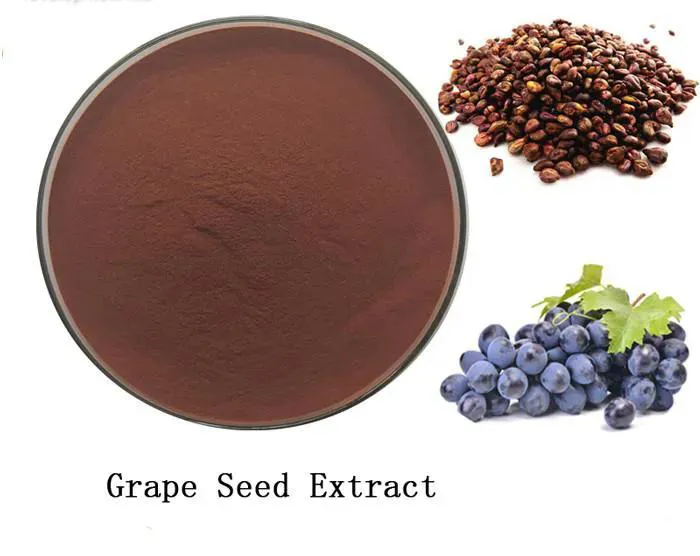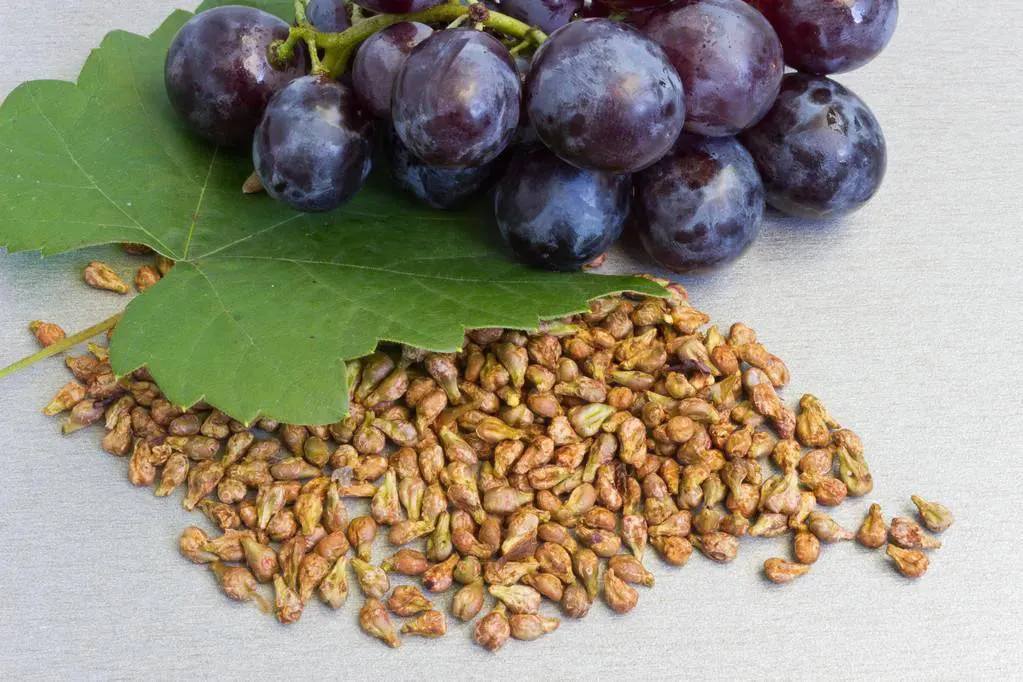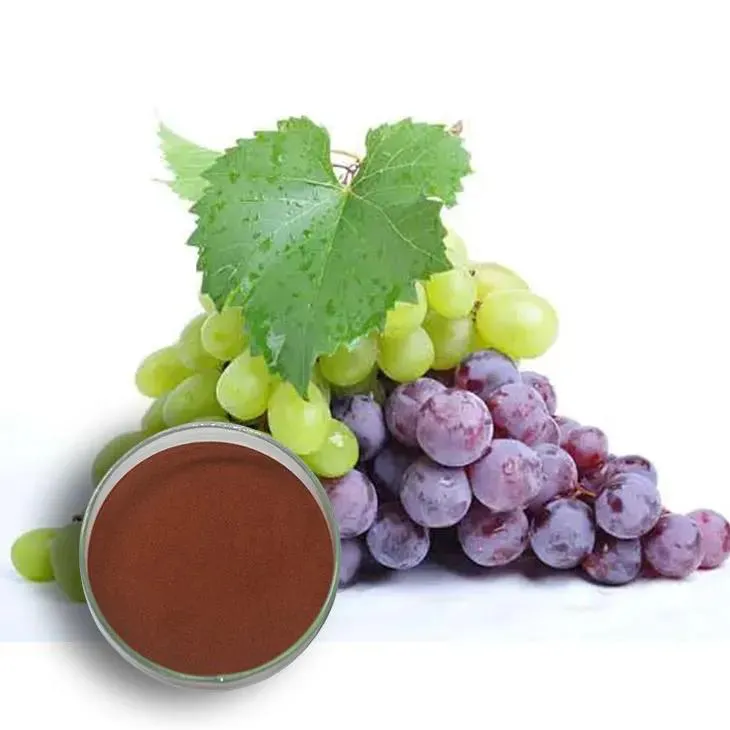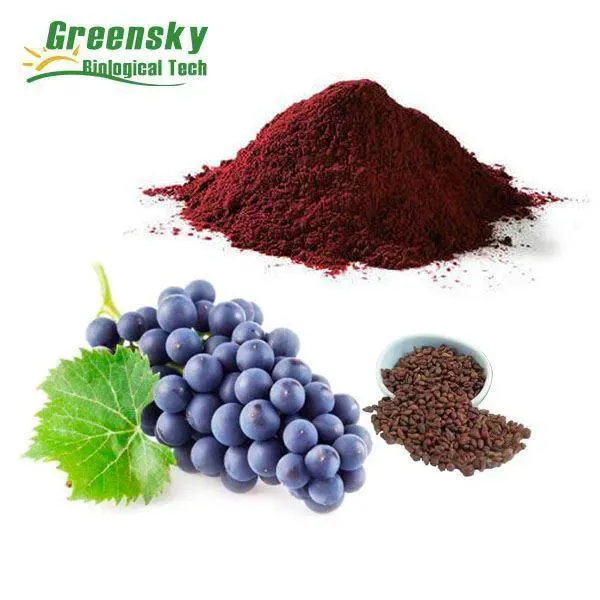- 0086-571-85302990
- sales@greenskybio.com
The Road Ahead: Challenges and Opportunities for Grape Seed Extract Disinfectants
2024-08-15

1. Introduction
In recent years, the search for effective and safe disinfectants has been on the rise. Grape Seed Extract disinfectants have emerged as a potential candidate in this arena. Grape Seed Extract is rich in phenolic compounds, which are known for their antioxidant and antimicrobial properties. However, like any emerging product in the disinfectant market, it faces a unique set of challenges and opportunities. This article will delve into these aspects, exploring how the industry can navigate through the difficulties and harness the potential benefits.

2. Challenges Faced by Grape Seed Extract Disinfectants
2.1 Stability Issues during Storage and Transportation
One of the primary challenges for grape seed extract disinfectants is stability. These disinfectants are often sensitive to environmental factors such as temperature, light, and humidity. During storage, fluctuations in temperature can cause degradation of the active components in the grape seed extract. For example, high temperatures may accelerate the breakdown of phenolic compounds, reducing the disinfectant's efficacy.
Similarly, during transportation, exposure to sunlight or extreme temperature changes can also affect the stability of the product. This poses a significant problem as it can lead to inconsistent performance of the disinfectant. In the market, consumers expect disinfectants to have a reliable and consistent level of effectiveness. If grape seed extract disinfectants cannot maintain their stability, it will be difficult to gain market acceptance.
2.2 Regulatory Hurdles
The disinfectant industry is highly regulated, and grape seed extract disinfectants are no exception. Regulatory requirements vary from country to country, and meeting these standards can be a complex and time - consuming process. For instance, in some regions, disinfectants need to undergo extensive testing to prove their safety and efficacy before they can be approved for use.
Grape seed extract disinfectants may face challenges in demonstrating their effectiveness against a wide range of pathogens as required by regulatory bodies. Additionally, there may be concerns regarding the potential toxicity of certain components in the extract, especially if they are used in large quantities or in inappropriate settings. These regulatory hurdles can slow down the development and commercialization of grape seed extract disinfectants.
2.3 Competition from Established Disinfectants
The disinfectant market is already dominated by well - established products such as chlorine - based disinfectants and alcohol - based hand sanitizers. These products have a long - standing reputation for effectiveness and are widely available at relatively low cost. Grape seed extract disinfectants need to compete with these established players in terms of price, efficacy, and consumer acceptance.
Consumers are often familiar with the traditional disinfectants and may be hesitant to switch to a new product. Moreover, the production and marketing costs of grape seed extract disinfectants may be higher initially, which could result in a higher price point. This price disadvantage can make it difficult to penetrate the market, especially in price - sensitive segments.

3. Opportunities for Grape Seed Extract Disinfectants
3.1 Targeting Multi - Drug Resistant Organisms
One of the significant opportunities for grape seed extract disinfectants lies in their potential to target multi - drug resistant organisms (MDROs). With the increasing prevalence of antibiotic - resistant bacteria, there is a growing need for alternative antimicrobial agents. Grape seed extract contains phenolic compounds that have shown promising activity against MDROs in laboratory studies.
For example, some studies have demonstrated that certain components in grape seed extract can disrupt the cell membranes of drug - resistant bacteria, leading to their death. This ability to combat MDROs could position grape seed extract disinfectants as a valuable addition to the arsenal of antimicrobial products, especially in healthcare settings where the control of MDROs is of utmost importance.
3.2 International Market Expansion
The global demand for disinfectants is on the rise, driven by factors such as increasing awareness of hygiene, growing population, and the need to prevent infectious diseases. Grape seed extract disinfectants have the potential to tap into this international market. Different regions may have a preference for natural - based disinfectants, which could provide an opportunity for grape seed extract - based products.
For instance, in some European countries, there is a growing trend towards using natural and environmentally friendly products. Grape seed extract disinfectants, with their natural origin and potential environmental benefits, could find a receptive market in such regions. Similarly, in some Asian countries where herbal and natural remedies have a long - standing tradition, there may be a market for these disinfectants.
3.3 Incorporation into Cosmetic and Personal Care Products
Another opportunity for grape seed extract disinfectants is their incorporation into cosmetic and personal care products. Grape seed extract is already known for its antioxidant properties, which can be beneficial for skin health. By combining its disinfectant and antioxidant properties, it can be used in products such as hand creams, body lotions, and facial cleansers.
This integration can provide added value to these products, as consumers are increasingly looking for products that offer multiple benefits. For example, a hand cream with grape seed extract disinfectant can not only moisturize the hands but also protect against harmful microorganisms. This can attract consumers who are interested in both skin care and hygiene.

4. Overcoming Challenges and Capitalizing on Opportunities through Innovation and Research
4.1 Improving Stability through Formulation and Packaging
To address the stability issues, innovation in formulation and packaging is crucial. Scientists can explore different formulations of grape seed extract disinfectants to enhance their stability. For example, the addition of stabilizers or encapsulation techniques can protect the active components from degradation.
In terms of packaging, using light - blocking and temperature - controlled containers can help maintain the integrity of the product during storage and transportation. These innovative approaches can ensure that grape seed extract disinfectants retain their effectiveness, thereby increasing their marketability.
4.2 Meeting Regulatory Requirements through Rigorous Testing
To overcome regulatory hurdles, companies developing grape seed extract disinfectants need to conduct rigorous testing. This includes comprehensive efficacy testing against a wide range of pathogens, as well as safety evaluations. By providing accurate and reliable data on the product's performance and safety, it becomes easier to obtain regulatory approvals.
Additionally, companies can work closely with regulatory agencies to understand the requirements and ensure compliance. This collaborative approach can speed up the regulatory process and enable the product to enter the market more quickly.
4.3 Differentiating from Competitors through Product Innovation
To compete with established disinfectants, product innovation is essential. Grape seed extract disinfectants can be developed with unique features, such as enhanced antimicrobial activity against specific pathogens or a longer - lasting effect. For example, research can be focused on optimizing the concentration and combination of phenolic compounds in the extract to achieve superior disinfectant properties.
Moreover, companies can invest in marketing strategies that highlight the natural and beneficial aspects of grape seed extract disinfectants. By effectively communicating the product's advantages over traditional disinfectants, it can attract consumers who are looking for more natural and sustainable options.

5. Conclusion
Grape seed extract disinfectants face both challenges and opportunities in the market. The stability issues, regulatory hurdles, and competition from established products are significant challenges that need to be addressed. However, the potential to target multi - drug resistant organisms, international market expansion, and incorporation into cosmetic and personal care products present exciting opportunities. Through innovation and research, it is possible to overcome the challenges and fully capitalize on the opportunities. The future of grape seed extract disinfectants looks promising, provided that the industry continues to invest in research, development, and marketing strategies to bring these products to their full potential.
FAQ:
What are the main stability issues of grape seed extract disinfectants during storage and transportation?
During storage and transportation, grape seed extract disinfectants may face several stability issues. One major problem is susceptibility to environmental factors such as temperature and humidity. High temperatures can cause the degradation of active components in the extract, reducing its disinfectant efficacy. Humidity can also lead to chemical reactions or microbial growth within the product. Additionally, interactions with packaging materials might occur, which could further affect the stability of the disinfectant.
How can grape seed extract disinfectants target multi - drug resistant organisms?
Grape seed extract disinfectants can target multi - drug resistant organisms through their unique chemical composition. The extract contains various bioactive compounds, such as phenolic acids and flavonoids. These compounds have been shown to disrupt the cell membranes and metabolic processes of multi - drug resistant organisms. They can interfere with the bacteria's ability to pump out drugs, a common mechanism of drug resistance. Moreover, the antioxidant properties of grape seed extract may also play a role in inhibiting the growth and survival of these resistant organisms.
What are the potential barriers to international market expansion for grape seed extract disinfectants?
There are several potential barriers to international market expansion for grape seed extract disinfectants. Regulatory differences across countries pose a significant challenge. Each country has its own set of regulations regarding disinfectant products, including requirements for safety, efficacy, and labeling. Meeting these diverse regulations can be time - consuming and costly. Cultural differences can also affect market acceptance. Some regions may have different preferences for disinfectant types or usage methods. Additionally, competition from established disinfectant products in the international market can be intense, making it difficult for new entrants like grape seed extract disinfectants to gain a foothold.
How can innovation and research contribute to the development of grape seed extract disinfectants?
Innovation and research play crucial roles in the development of grape seed extract disinfectants. Research can help in identifying and optimizing the most effective bioactive components within the extract. This can lead to the development of more potent disinfectant formulations. Innovation in formulation techniques can improve the stability and shelf - life of the disinfectants. For example, new encapsulation methods can protect the active ingredients from degradation. Research can also explore new application methods, such as aerosol - based or slow - release forms, which can enhance the disinfectant's effectiveness. Moreover, studies on the safety profile of grape seed extract disinfectants can help in meeting regulatory requirements and building consumer trust.
What are the current market trends for grape seed extract disinfectants?
The current market trends for grape seed extract disinfectants show both growth potential and challenges. There is an increasing demand for natural and plant - based disinfectants, which bodes well for grape seed extract products. Consumers are becoming more conscious of the potential health and environmental impacts of chemical disinfectants, leading them to seek alternatives like grape seed extract disinfectants. However, the market is still relatively small compared to traditional disinfectant products. There is a need for more marketing efforts to raise awareness about the benefits of grape seed extract disinfectants. Additionally, continuous product improvement and innovation are required to keep up with the evolving market demands.
Related literature
- The Antimicrobial Properties of Grape Seed Extract: A Comprehensive Review"
- "Stability and Efficacy of Plant - Based Disinfectants: Focus on Grape Seed Extract"
- "Grape Seed Extract in the Context of Global Disinfectant Market"
- "Innovation in Disinfectant Development: The Role of Grape Seed Extract"
- ▶ Hesperidin
- ▶ Citrus Bioflavonoids
- ▶ Plant Extract
- ▶ lycopene
- ▶ Diosmin
- ▶ Grape seed extract
- ▶ Sea buckthorn Juice Powder
- ▶ Fruit Juice Powder
- ▶ Hops Extract
- ▶ Artichoke Extract
- ▶ Mushroom extract
- ▶ Astaxanthin
- ▶ Green Tea Extract
- ▶ Curcumin
- ▶ Horse Chestnut Extract
- ▶ Other Product
- ▶ Boswellia Serrata Extract
- ▶ Resveratrol
- ▶ Marigold Extract
- ▶ Grape Leaf Extract
- ▶ New Product
- ▶ Aminolevulinic acid
- ▶ Cranberry Extract
- ▶ Red Yeast Rice
- ▶ Red Wine Extract
-
Lemon Extract
2024-08-15
-
Mango flavored powder
2024-08-15
-
Coconut Water Powder
2024-08-15
-
Resveratrol extract
2024-08-15
-
Milk Thistle Extract
2024-08-15
-
Mangosteen extract powder
2024-08-15
-
Moringa powder
2024-08-15
-
Centella Asiatica Extract
2024-08-15
-
Chia Seed Powder
2024-08-15
-
Elderberry Extract
2024-08-15





















